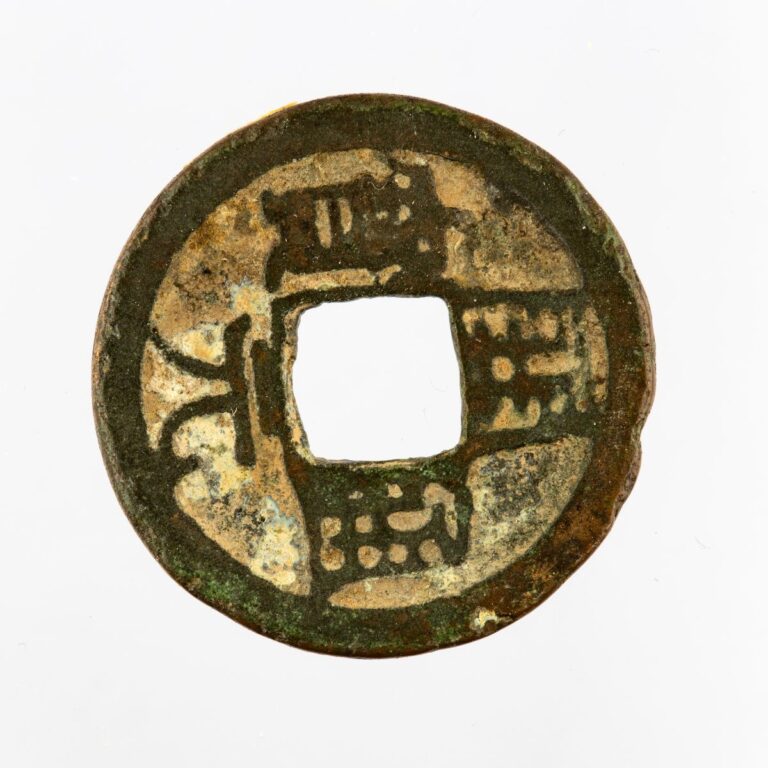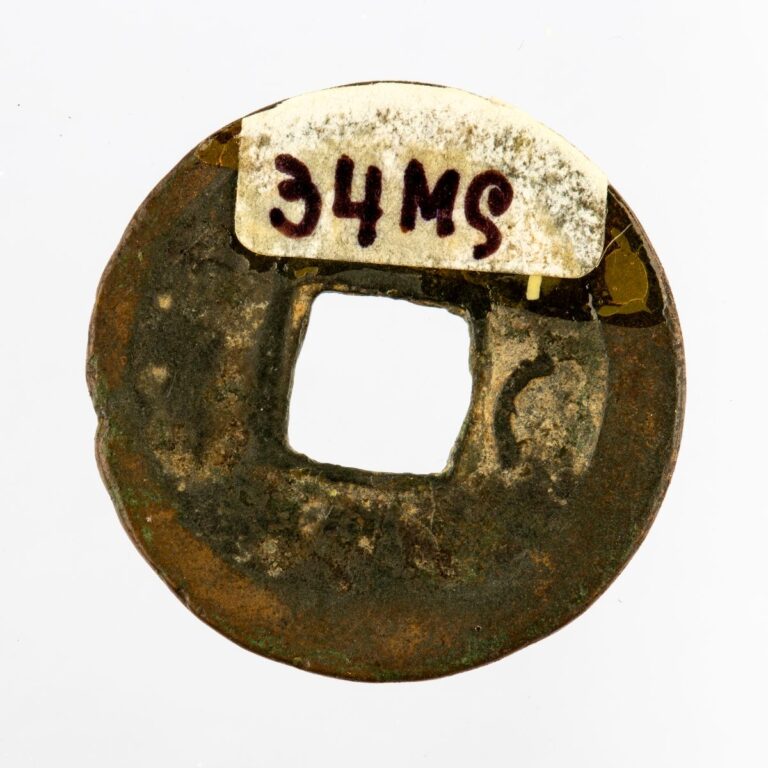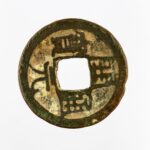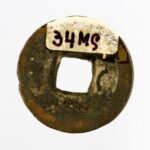Coin Kaiyuan tongbao
A round copper alloy coin with a square hole in the centre, called fangkong qian 方孔錢. These appeared in various denominations, mostly as tongbao 通寶 (“common currency”) coins, which were worth one monetary unit, yuanbao 元寶 (“original currency”) and zhongbao 重寶 (“heavy currency”), which had higher denominations. In many varieties and denominations, such coins had been in circulation as standard money since the time of Emperor Gaozu 高祖 (reigned 618–626), the first emperor of the Tang Dynasty (618–907). In 621, he introduced a new coinage standard with the issue of the Kaiyuan tongbao 開元通寶 coin. Its name could be translated as “money in circulation at the beginning of a new era” because kai 開 (open, begin) and yuan 元 (new, first, original), read vertically from top to bottom, mean “opening a new era”, while tong 通 (circulate, ... more
A round copper alloy coin with a square hole in the centre, called fangkong qian 方孔錢. These appeared in various denominations, mostly as tongbao 通寶 (“common currency”) coins, which were worth one monetary unit, yuanbao 元寶 (“original currency”) and zhongbao 重寶 (“heavy currency”), which had higher denominations. In many varieties and denominations, such coins had been in circulation as standard money since the time of Emperor Gaozu 高祖 (reigned 618–626), the first emperor of the Tang Dynasty (618–907). In 621, he introduced a new coinage standard with the issue of the Kaiyuan tongbao 開元通寶 coin. Its name could be translated as “money in circulation at the beginning of a new era” because kai 開 (open, begin) and yuan 元 (new, first, original), read vertically from top to bottom, mean “opening a new era”, while tong 通 (circulate, be uniform, general, or universal), and bao 寶 (wealth, money), read from right to left, is the “currency in circulation” or simply the coin currently valid. On coins of later periods, the characters yuan 元 (origin, base) and zhong 重 (weight), denoting the main coin values, often replaced the character tong. Kaiyuan tongbaotongbao, which was still frequently used on coins in later dynasties. The kaiyuan tongbao coins of the early period of the dynasty were known for their excellent quality, so they became a kind of standard for coinage in all later dynasties, although the quality of the coins rarely reached that of the first half of the Tang dynasty.
On the reverse of Kaiyuan tongbao coins, a crescent-shaped mark is often found, as seen on this coin. According to folk tradition, Empress Wende 文德 (601–636), the consort of Emperor Taizong 太宗 (reigned 626–649), accidentally stuck one of her long fingernails into a wax pattern for coin casting when it was presented to her, and the workers at the mint preserved the scratch or fingernail mark when making the coins out of respect for the Empress. According to other versions of the story, the nail impression belonged to the famous beauty Yang Guifei 楊貴妃 (719–756), the legendary concubine of Emperor Xuanzong 玄宗 (reigned 713–756). The actual origin of the sign is in all likelihood much more prosaic in nature, as it was probably intended only to facilitate control over the minting of money. (MG)







































Do you have a comment or additional information about the subject?